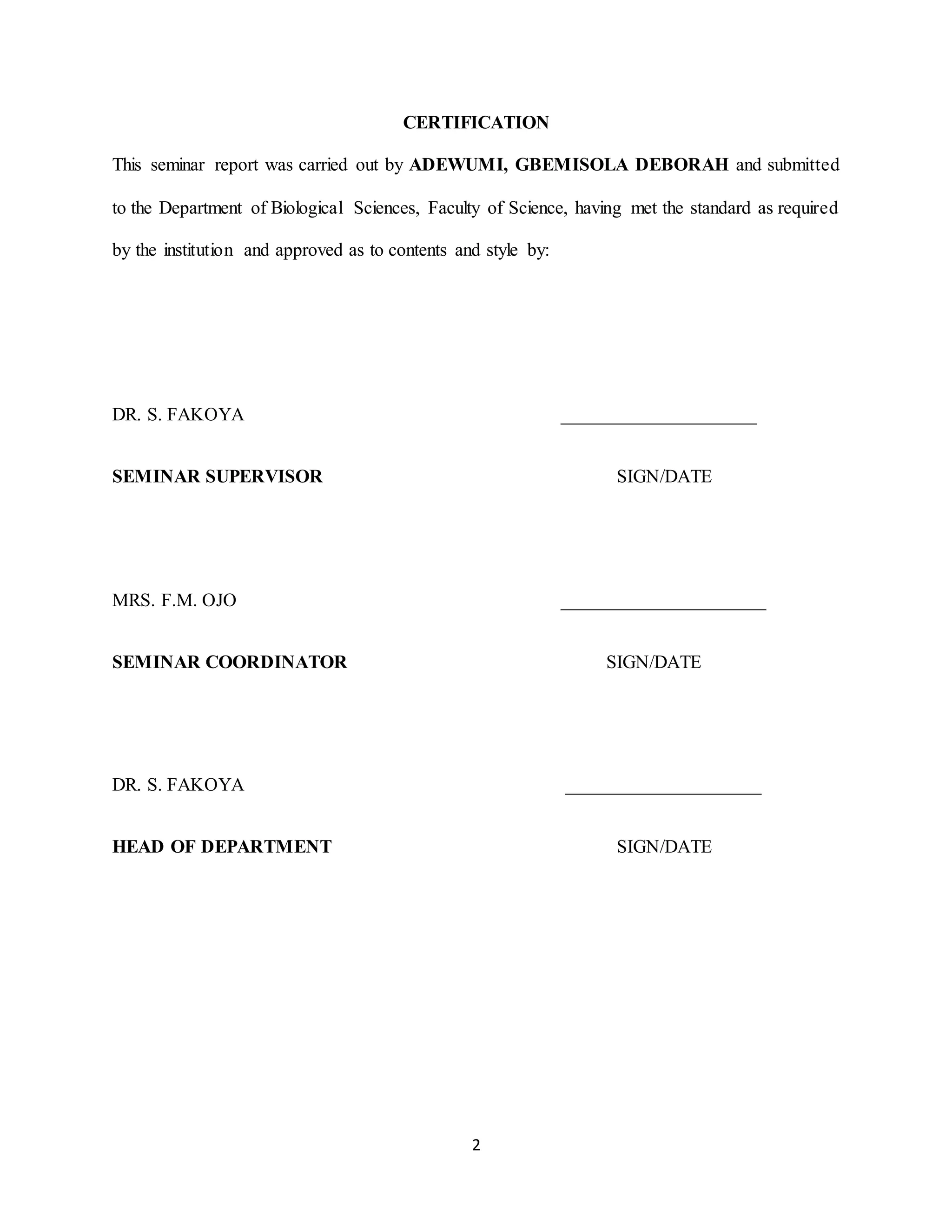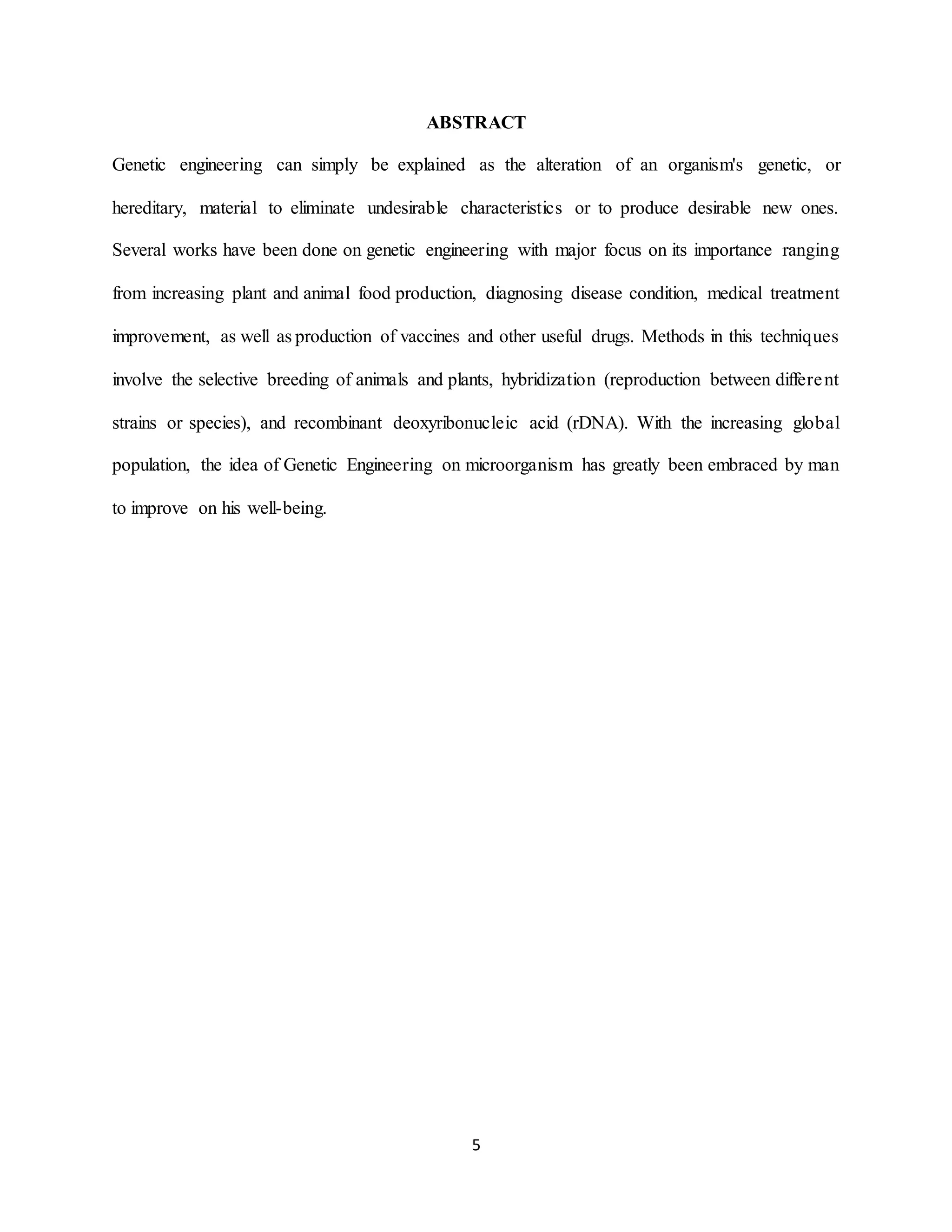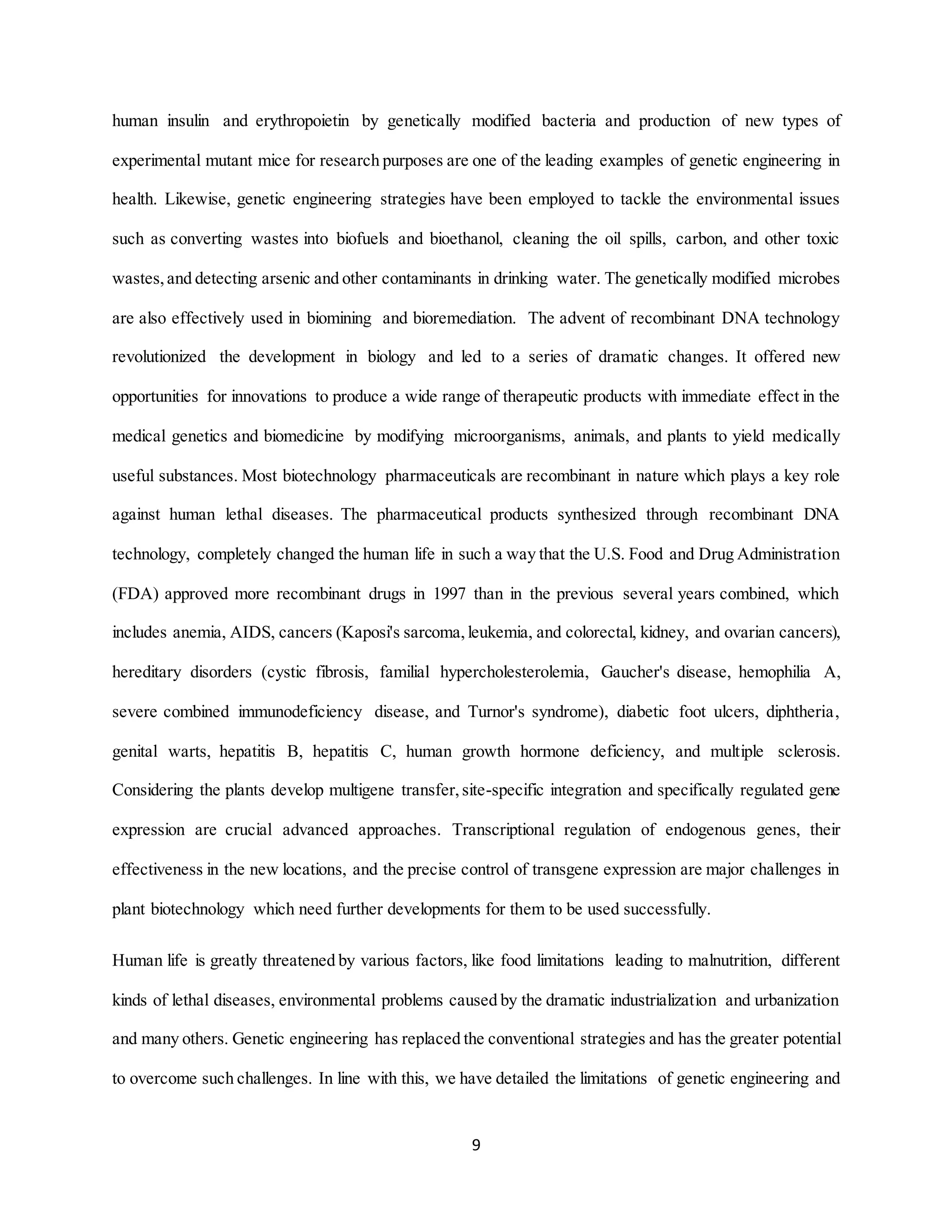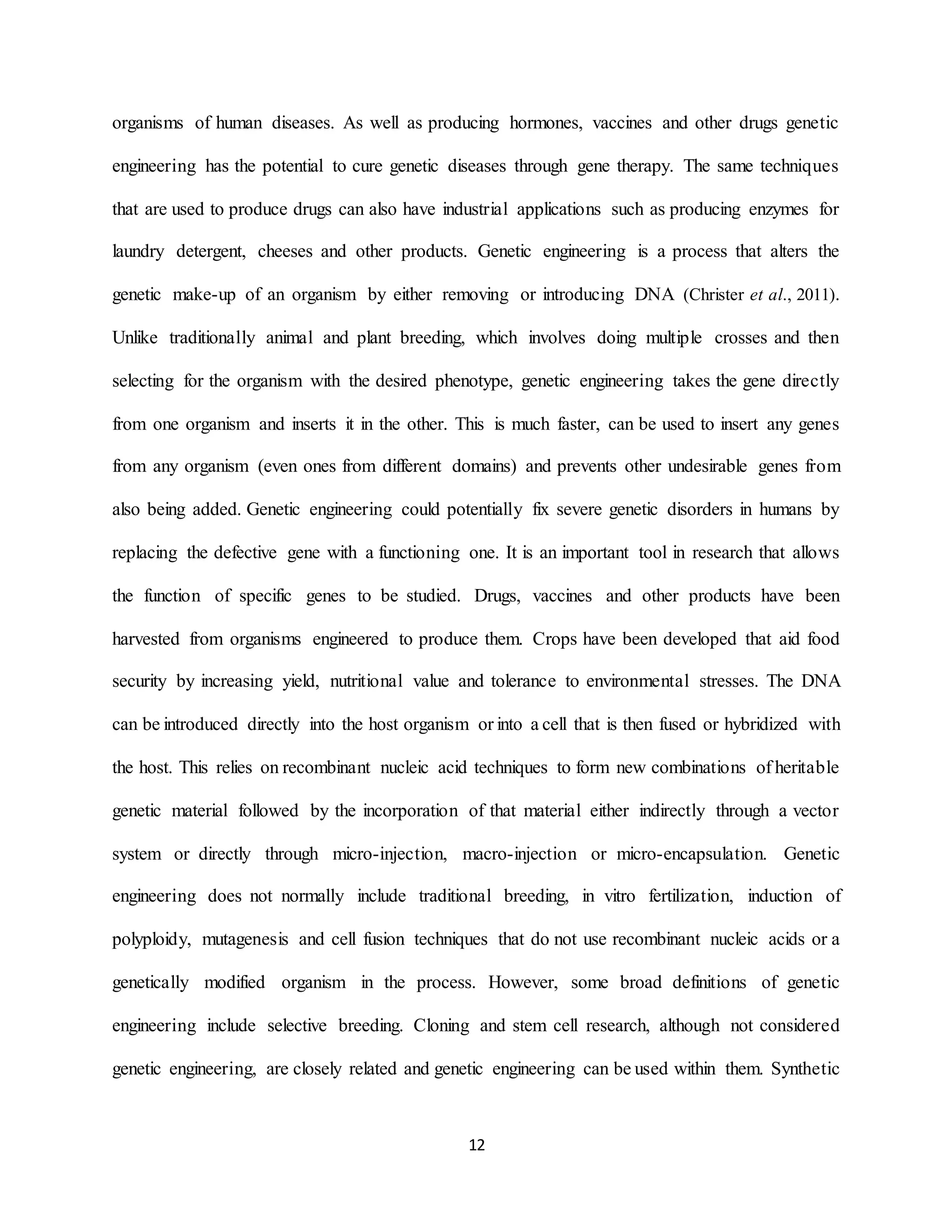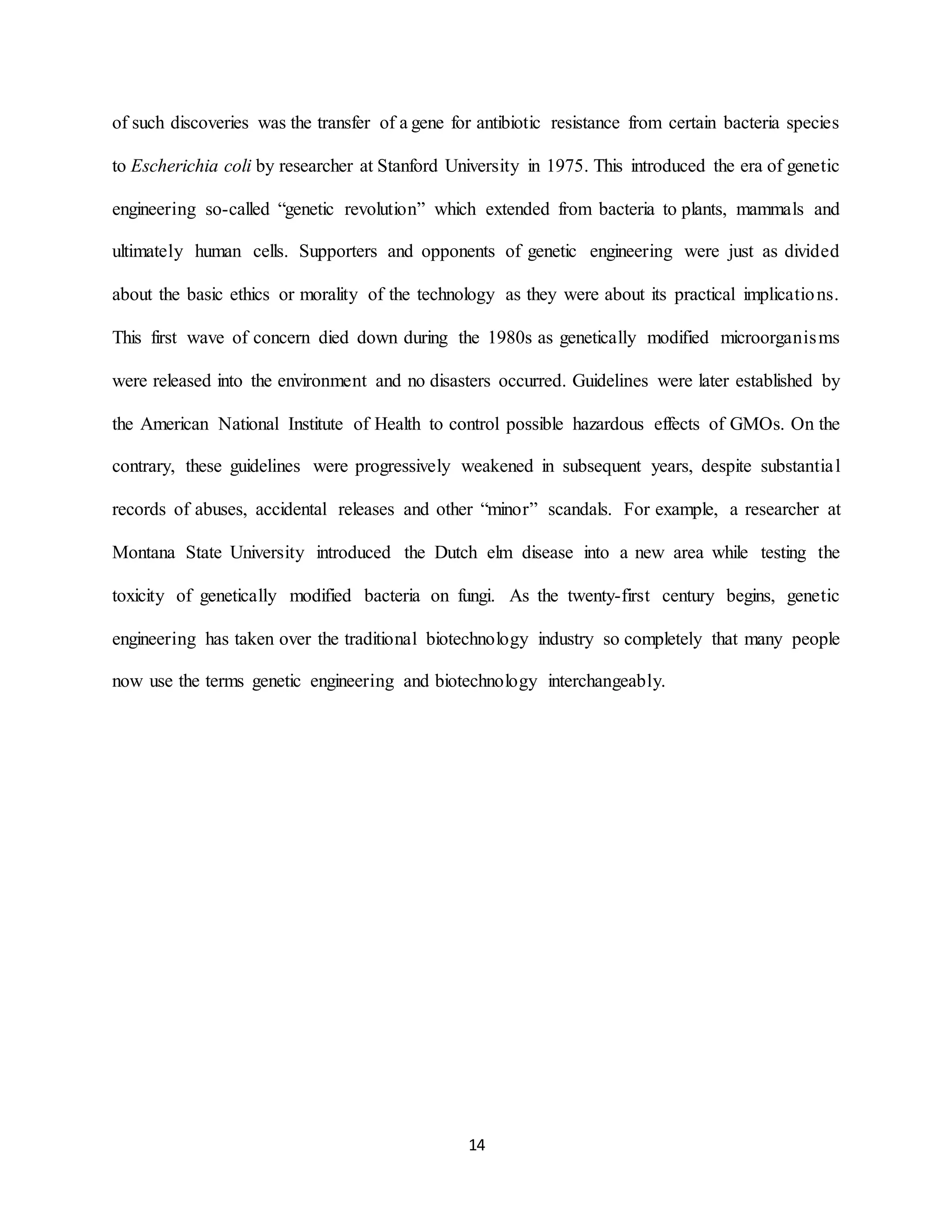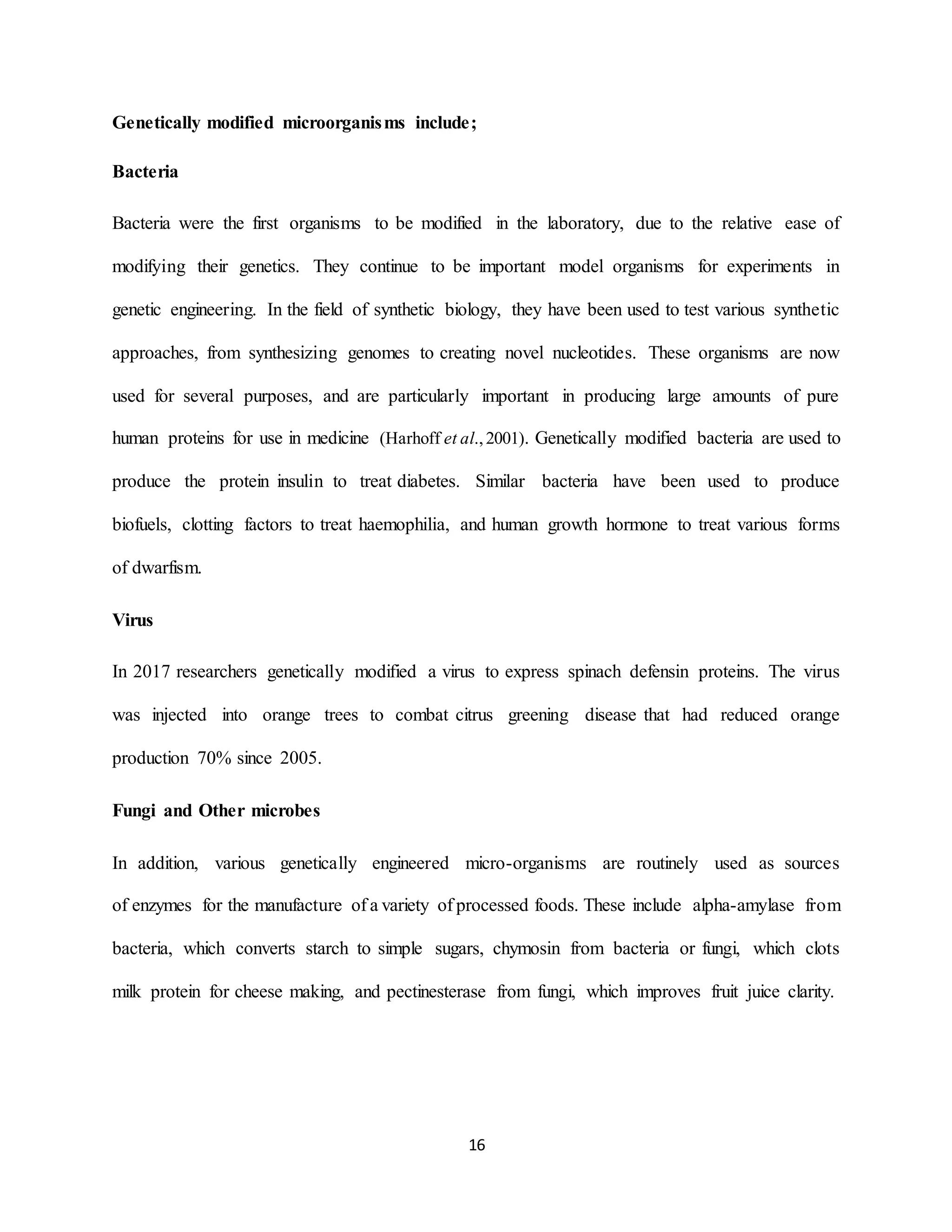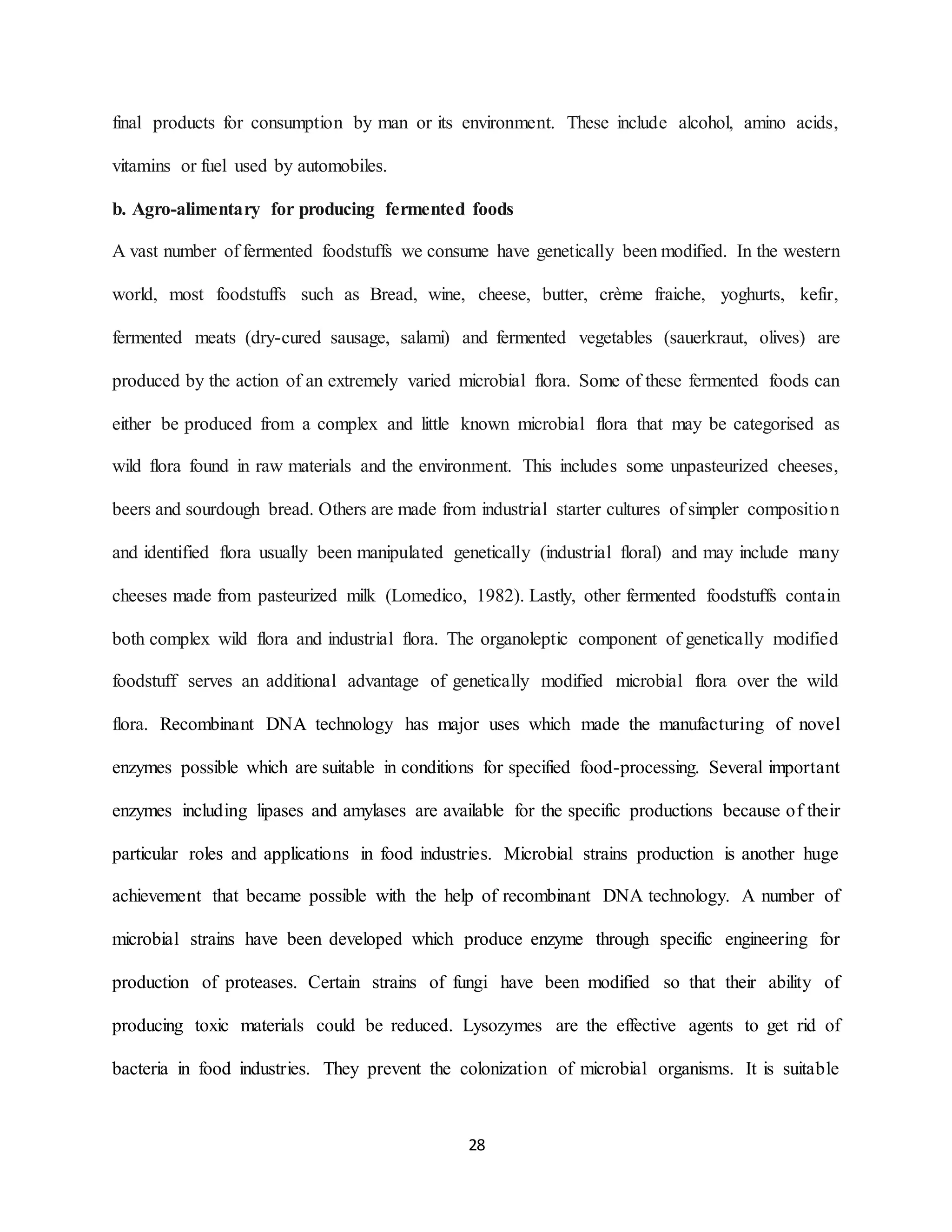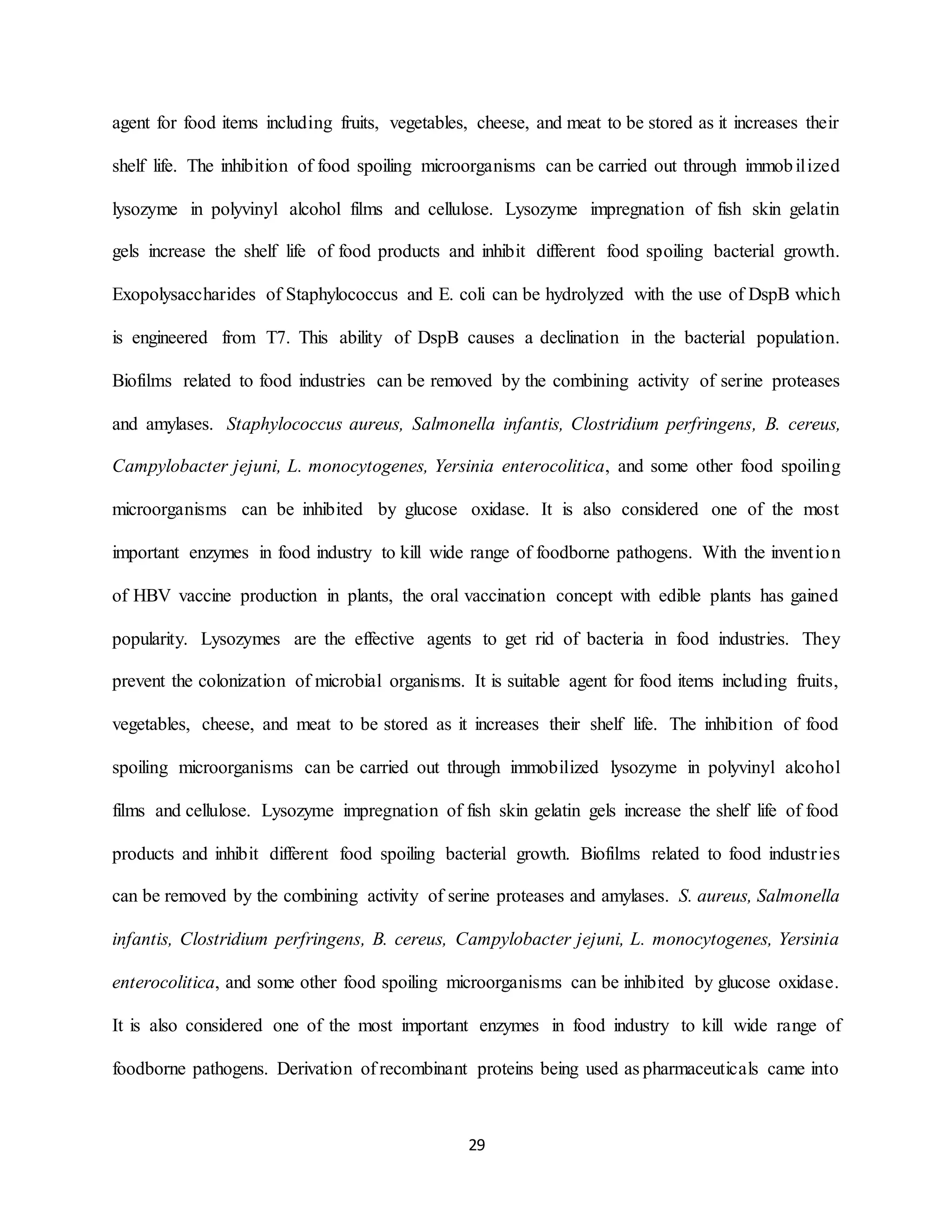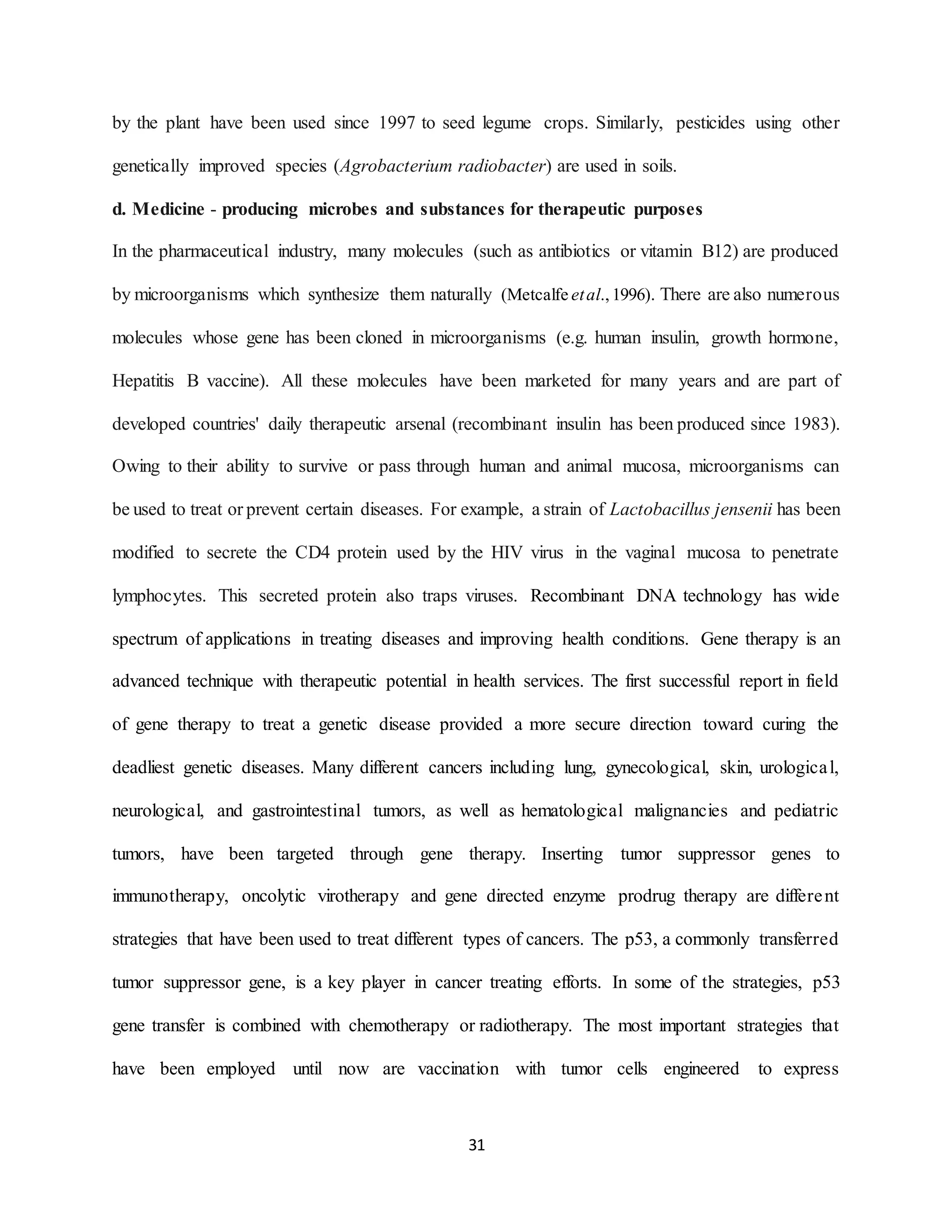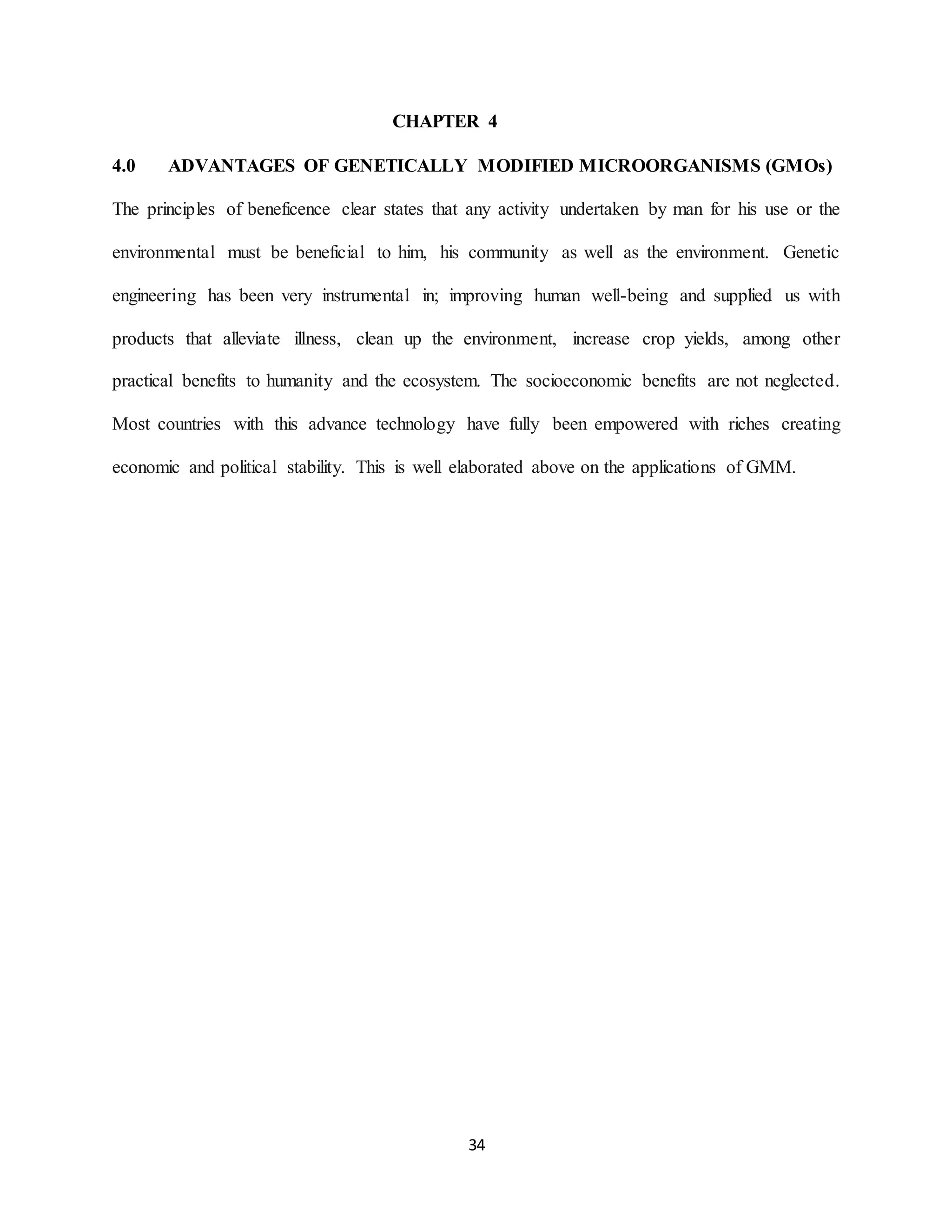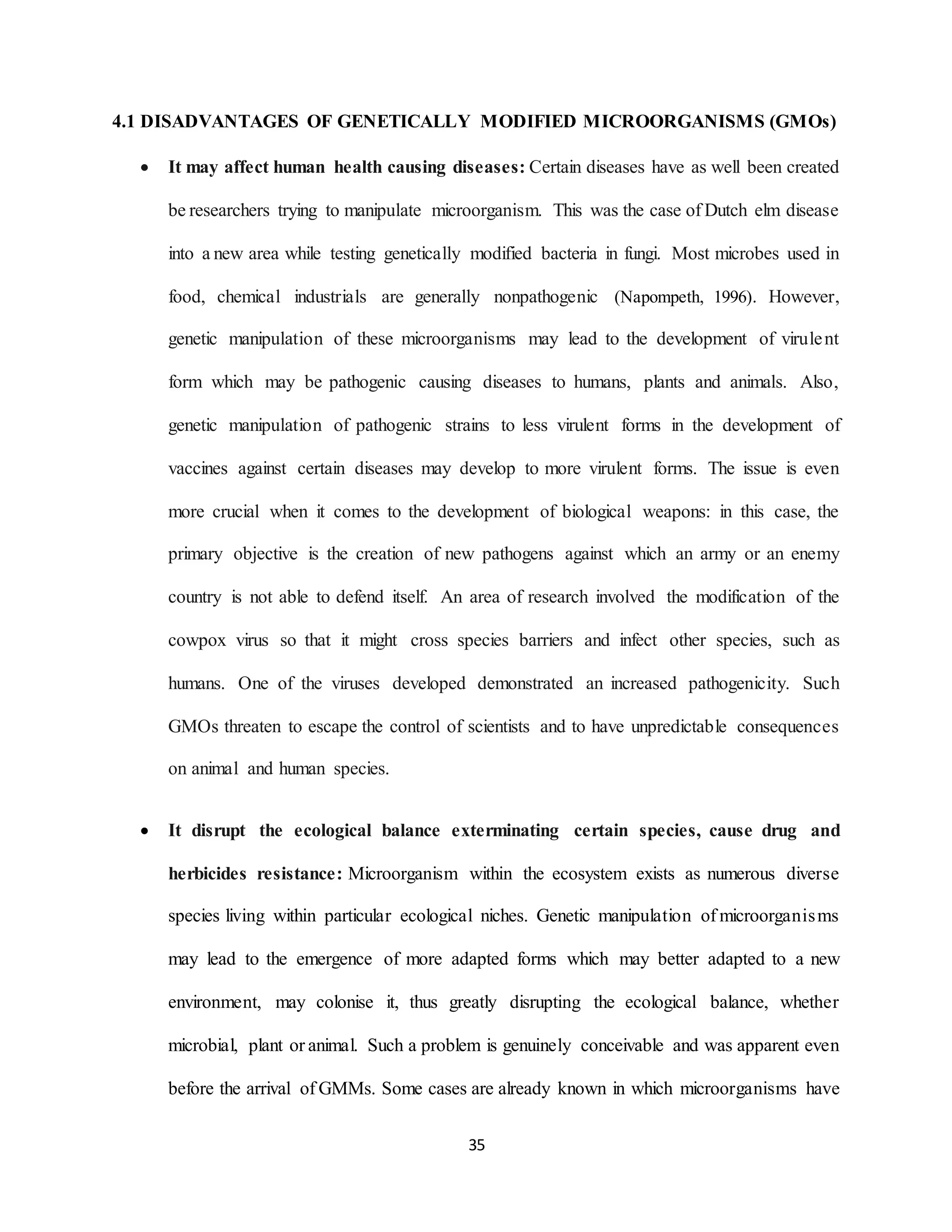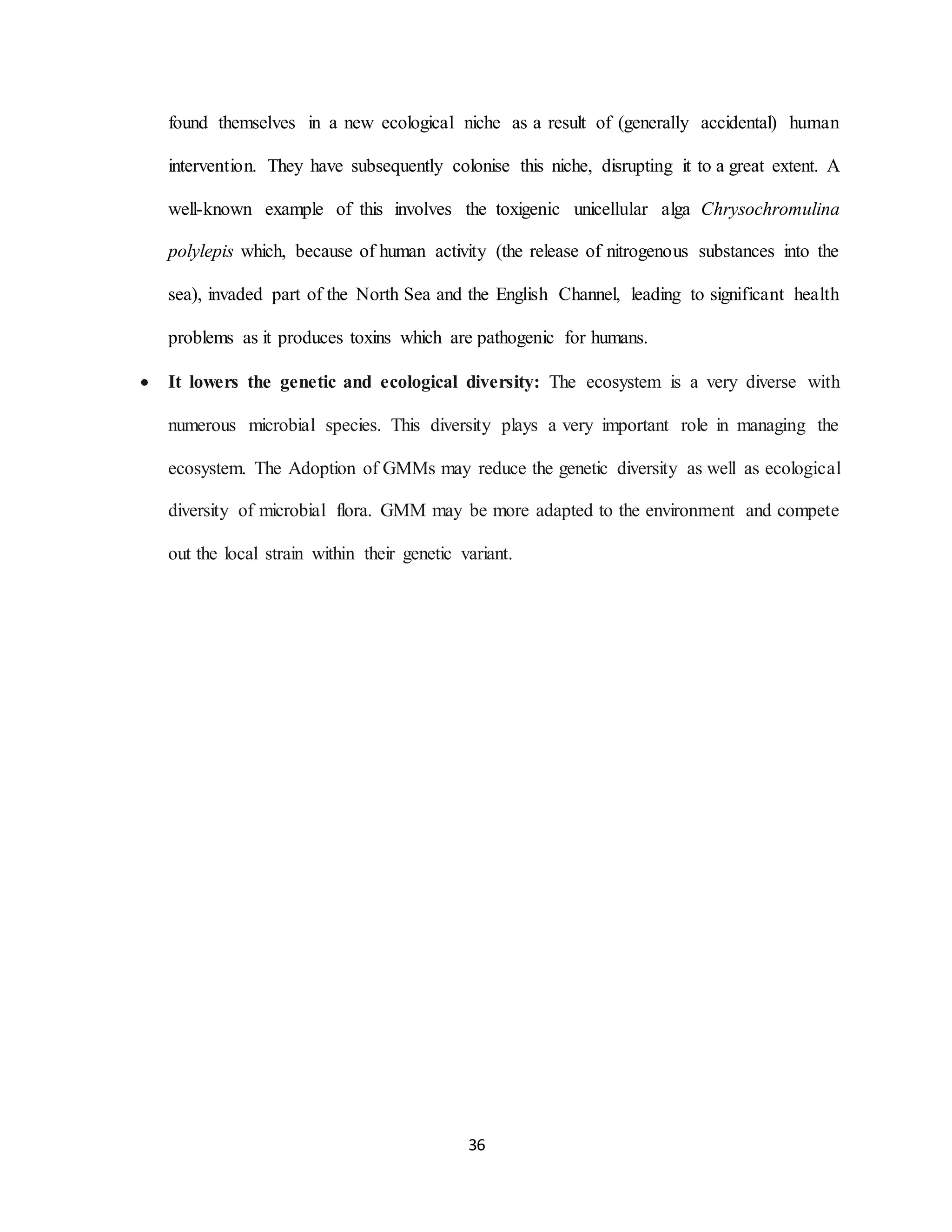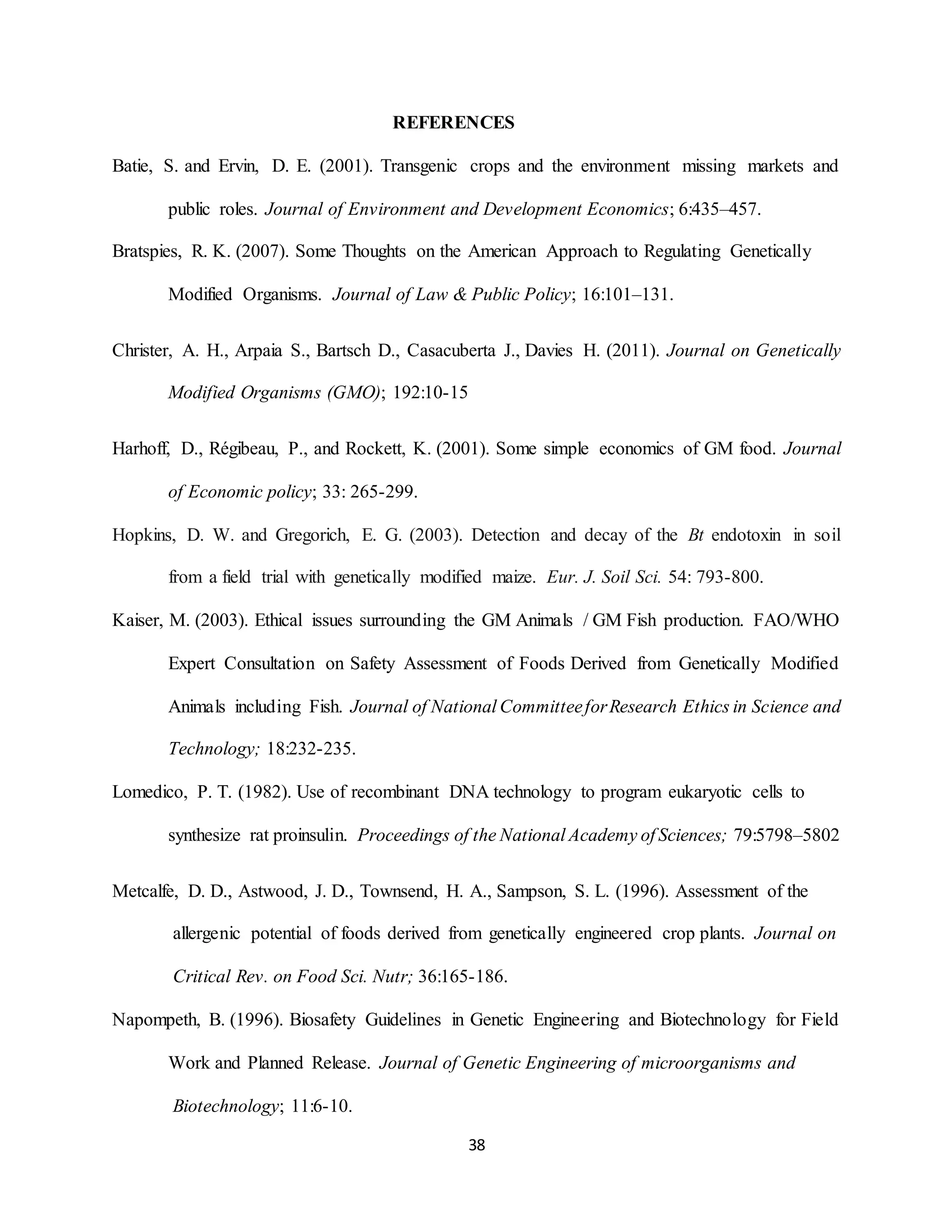This document is an essay seminar on using genetic engineering of microbes to improve quality of life. It discusses how genetic engineering can help address issues with food production, health, and the environment by modifying microorganisms. Traditional breeding and techniques are slower and less precise than genetic engineering techniques like molecular cloning and transformation, which allow targeting specific genes. Genetic engineering of microbes has led to developments like synthetic insulin and new vaccines, and can be used for bioremediation and producing biofuels. While it has benefits, genetic engineering also faces challenges like regulating transgene expression in plants.

